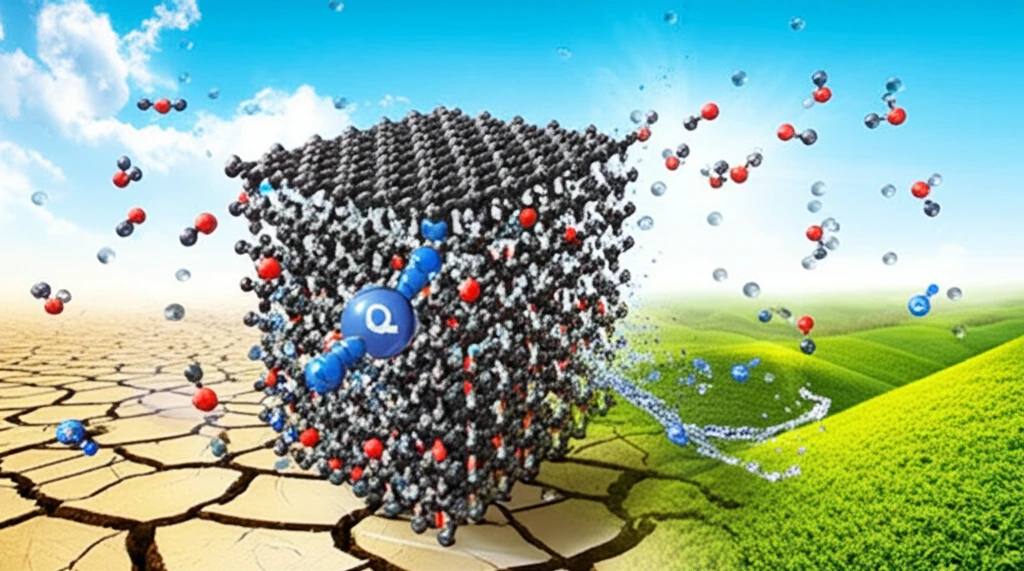
The Salty Solution: How Advanced Carbon Tech is Making Desalination Cheaper and More Efficient
"New research unveils a groundbreaking three-dimensional N-doped porous carbon material that promises to revolutionize capacitive deionization (CDI) and energy storage, paving the way for accessible clean water and sustainable energy solutions."
In an era defined by pressing environmental challenges, the quest for sustainable solutions has never been more critical. Two of the most significant hurdles we face are the increasing scarcity of clean water and the urgent need for efficient energy storage. Fortunately, groundbreaking research is emerging that offers promising pathways to address these challenges head-on.
At the forefront of this innovation is the development of advanced carbon materials, particularly a novel substance known as three-dimensional N-doped porous carbon (3D-NPC). This material is proving to be a game-changer in capacitive deionization (CDI), a technique used for water desalination, and also holds immense potential for enhancing the performance of energy storage devices like zinc-air batteries.
This article explores the fascinating world of 3D-NPCs, delving into their unique properties, the science behind their effectiveness, and the far-reaching implications they hold for a more sustainable and resource-efficient future. Prepare to discover how cutting-edge carbon technology is poised to revolutionize water treatment and energy storage, bringing us closer to a world where clean water is accessible to all and renewable energy is readily available.
The Rise of 3D-NPCs: A New Frontier in Material Science

Three-dimensional N-doped porous carbon (3D-NPC) is not just another carbon material; it's a meticulously engineered structure designed to maximize its performance in specific applications. The key to its effectiveness lies in its unique architecture and composition. The 'three-dimensional' aspect refers to its interconnected network of carbon, creating a highly porous structure. This porosity is crucial because it provides a large surface area, which is essential for both capacitive deionization and energy storage.
- High Surface Area: The porous structure provides an extensive surface area for ion adsorption.
- Enhanced Conductivity: Nitrogen doping boosts the material's ability to conduct electricity.
- Tunable Properties: The material's characteristics can be adjusted to optimize performance for specific applications.
- Sustainable Material: Derived from monosodium glutamate, a renewable resource, making it environmentally friendly.
The Future is Clear: Sustainable Solutions for a Thirsty World
The development and application of 3D-NPCs in capacitive deionization and energy storage represent a significant step towards a more sustainable and resource-efficient future. As we continue to refine and scale up these technologies, we can envision a world where clean water is readily available to communities around the globe and renewable energy sources are harnessed more effectively. By embracing innovative materials and techniques, we can pave the way for a brighter, more sustainable tomorrow.
